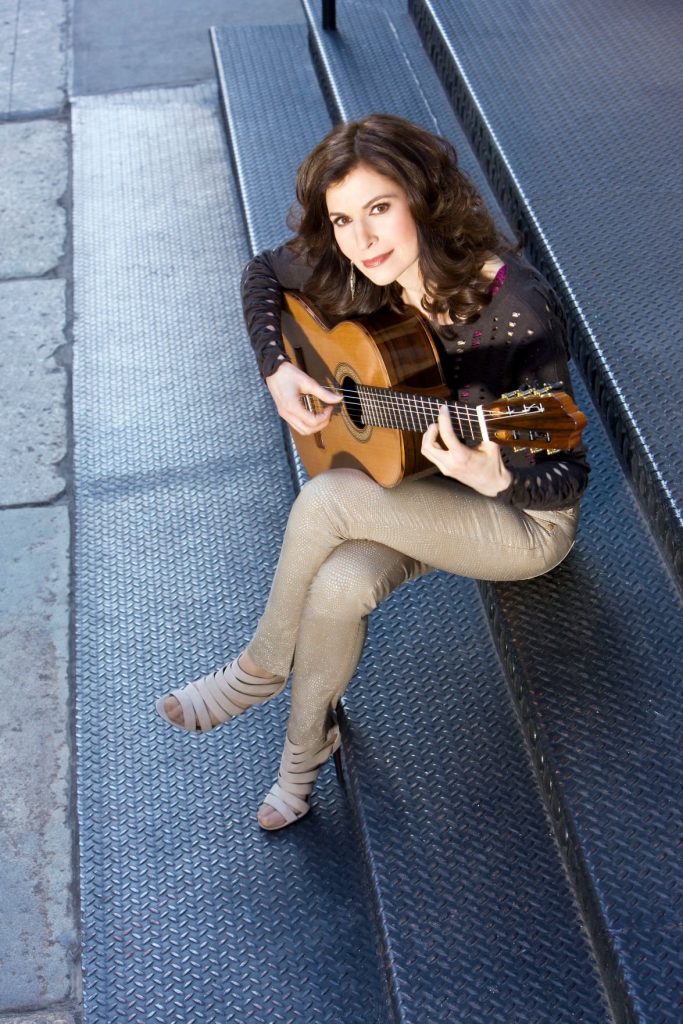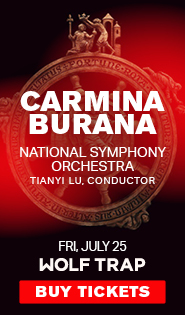Isbin brings virtuosic fire, story-telling charm to Spanish program at Wolf Trap

Sharon Isbin performed Sunday at Wolf Trap. Photo: J. Henry Fair
Sharon Isbin presented “The Spanish Hour” Sunday afternoon at the Barns at Wolf Trap, offering a collection of Spanish and Latin-American pieces that showed that Isbin knows how to play guitar as few others can.
Meeting the dual objectives of pandemic safety and cool presentation, Isbin wore a striking red leather-esque mask that matched her outfit perfectly. Yet from the first notes of her opening piece, Enrique Granados’ Spanish Dance No. 5, it was her technique that shone most brightly.
The cleanness of her sound jumped out immediately: precise intonation, ringing sustained notes, delicately graded dynamics, with few if any errors even in the trickiest thickets of notes. The triplets in Francisco Tárrega’s Recuerdos de la Alhambra flowed with utter smoothness, reminiscent of the falling water they depict. She can also convey instrumental color she requires, making the guitar sound fiercely intimate or as grand as an orchestra. It’s a pleasure just to hear her strum.
Leo Brouwer’s El Decameron Negro, written for Isbin, brought the most musical heft to Sunday’s concert. Cast in three movements, Brouwer’s suite relates the story of a warrior who falls out of favor with his village once he discovers he loves the harp. (Isn’t that always the way?) Brouwer sharply characterizes the warrior with a craggy, rising theme that Isbin declaimed imposingly, and the subsequent events—battle, love, etc.—were cast in equally vivid music that Isbin helped shape into a compelling narrative. On a concert full of flair and fireworks, it was nice to have a meatier work to dig into as well.
Isbin typically phrased melodies freely, hesitating at crucial moments as a singer would to draw out the drama. The blood ran hottest in the two chestnuts that closed the first half of the program, Tárrega’s Capricho Arabe and the Andres Segovia transcription of Isaac Albeniz’s Asturias, the latter of which featured scintillating flamenco strumming interspersed with vivid evocations of song from Isbin’s guitar.
Dances composed most of the second half of the program, and they had a light but beguiling swing. These pieces also provided Isbin with the opportunity to relate some impressive anecdotes, such as how she played Agustín Barrios Mangoré’s Julia Florida for Segovia (and got scolded by the great guitarist, who disliked the composer), and how she had been joined in playing Antonio Lauro’s Waltz No. 3, “Natalia,” by the composer’s daughter, after whom the waltz was named.
The stories made Isbin’s stylish performances of these works feel more personal. They also likely helped draw potential classical or guitar newcomers into this program, which was recorded for Center Stage from Wolf Trap—a fitting showcase for a fine musician.


